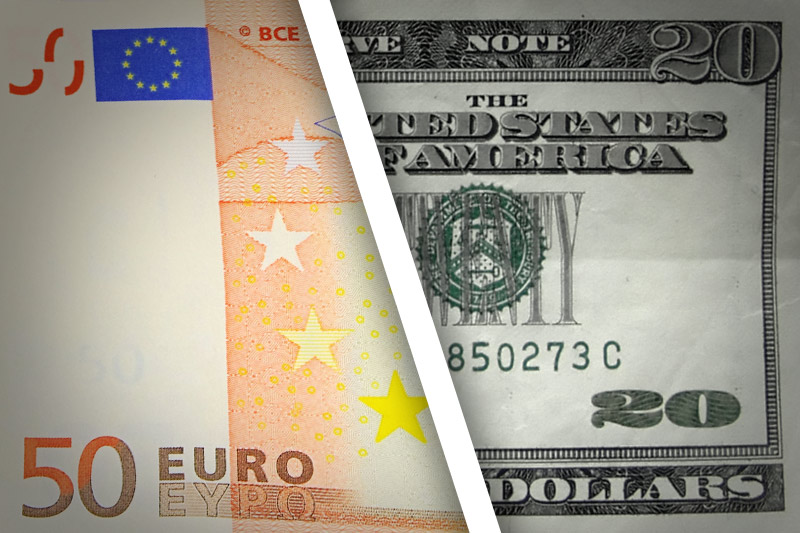Investing.com - The dollar slumped against the euro on Friday after the U.S. August jobs report disappointed investors and clouded expectations for a Federal Reserve start date to begin tapering the pace of its asset purchases.
In U.S. trading on Friday, EUR/USD was up 0.35% at 1.31671, up from a session low of 1.3105 and off from a high of 1.3189.
The pair was likely to find support at 1.3068, the low from July 16, and resistance at 1.3223, Thursday's high.
The U.S. economy added 169,000 jobs in August, according to the Bureau of Labor Statistics, less than market calls for a 180,000 increase.
July 's figure was revised down to 104,000 from 162,000, while June's figure was revised down to 172,000 from 188,000.
The private sector added 152,000 jobs in August, well beneath expectations for a 180,000 rise
The U.S. unemployment rate fell to 7.3% in August, from 7.4% in July, as more people left the workforce. Analysts were expecting the unemployment rate to remain unchanged last month.
Soft German data, however, capped the euro's gains.
Germany reported that industrial production in Europe's largest economy contracted by 1.7% in July, well beyond expectations for a 0.5% fall after a downwardly revised 2% increase in June.
A separate report revealed that Germany's trade surplus narrowed unexpectedly to EUR14.5 billion in July from an upwardly revised June surplus of EUR15.8 billion. Analysts were expecting the trade surplus to expand to EUR16.1 billion in July.
Elsewhere, the euro was up against the pound and down against the yen, with EUR/GBP trading up 0.07% at 0.8422 and EUR/JPY trading down 0.78% at 130.32.
Official data released earlier revealed that U.K. manufacturing production rose 0.2% in July, missing expectations for a 0.3% rise after an upwardly revised 2% increase the previous month.
A separate report showed that the U.K. trade deficit widened to GBP9.85 billion in July, from a downwardly revised GBP8.17 billion deficit the previous month. Analysts had expected the trade deficit to narrow to GBP8.15 billion in July.
In U.S. trading on Friday, EUR/USD was up 0.35% at 1.31671, up from a session low of 1.3105 and off from a high of 1.3189.
The pair was likely to find support at 1.3068, the low from July 16, and resistance at 1.3223, Thursday's high.
The U.S. economy added 169,000 jobs in August, according to the Bureau of Labor Statistics, less than market calls for a 180,000 increase.
July 's figure was revised down to 104,000 from 162,000, while June's figure was revised down to 172,000 from 188,000.
The private sector added 152,000 jobs in August, well beneath expectations for a 180,000 rise
The U.S. unemployment rate fell to 7.3% in August, from 7.4% in July, as more people left the workforce. Analysts were expecting the unemployment rate to remain unchanged last month.
Soft German data, however, capped the euro's gains.
Germany reported that industrial production in Europe's largest economy contracted by 1.7% in July, well beyond expectations for a 0.5% fall after a downwardly revised 2% increase in June.
A separate report revealed that Germany's trade surplus narrowed unexpectedly to EUR14.5 billion in July from an upwardly revised June surplus of EUR15.8 billion. Analysts were expecting the trade surplus to expand to EUR16.1 billion in July.
Elsewhere, the euro was up against the pound and down against the yen, with EUR/GBP trading up 0.07% at 0.8422 and EUR/JPY trading down 0.78% at 130.32.
Official data released earlier revealed that U.K. manufacturing production rose 0.2% in July, missing expectations for a 0.3% rise after an upwardly revised 2% increase the previous month.
A separate report showed that the U.K. trade deficit widened to GBP9.85 billion in July, from a downwardly revised GBP8.17 billion deficit the previous month. Analysts had expected the trade deficit to narrow to GBP8.15 billion in July.
